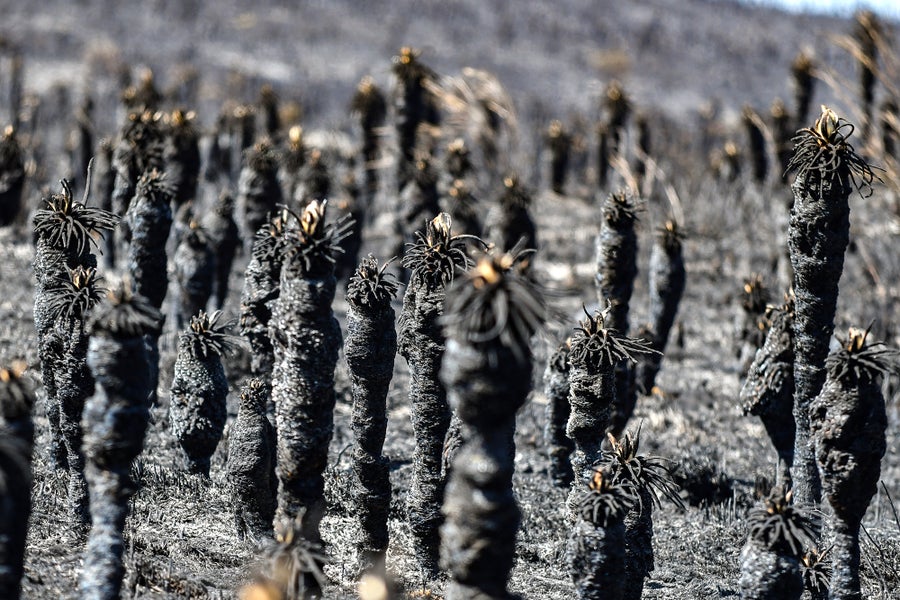With ecosystems ranging from Andean highlands to vast plains to the Amazon rain forest, Colombia—perched at the juncture of Central and South America—is home to nearly 10 percent of the world’s biodiversity. Its iconic species include dozens in the genus Espeletia: Seussian-looking plants commonly called frailejones, or “big monks.” Their rosettes of succulent, hairy leaves top off thick and spongy trunks that trap fog drifting in over the Andes’ unique and delicate high-altitude wetlands, called paramos.
Among the world’s fastest evolving ecosystems, the moist paramos stand in contrast to the arid climes of the rest of the Andes. Though they cover only 1.7 percent of Colombia, they provide the nation with 85 percent of its drinking water—much of it stored in the trunks of frailejones during the water cycle and later released into lakes and waterways. All this moisture has historically made the paramos resistant to the ignition and spread of wildfires.
But this year an unprecedented wildfire season has seen paramos catching fire across Colombia. One wildfire scorched more than 100 acres of frailejones in northeastern Colombia’s Berlin Paramo alone. More than 500 fires have burned across the country since 2024 began, consuming at least 42,000 acres of forest and grasslands and blanketing Colombia’s capital, Bogotá, in a pall of polluting smoke.
On supporting science journalism
If you’re enjoying this article, consider supporting our award-winning journalism by subscribing. By purchasing a subscription you are helping to ensure the future of impactful stories about the discoveries and ideas shaping our world today.
Colombia’s wildfire season typically coincides with its December-to-March dry season, and the number of blazes and area burned vary from year to year. A 2022 study in…
Read the full article here







